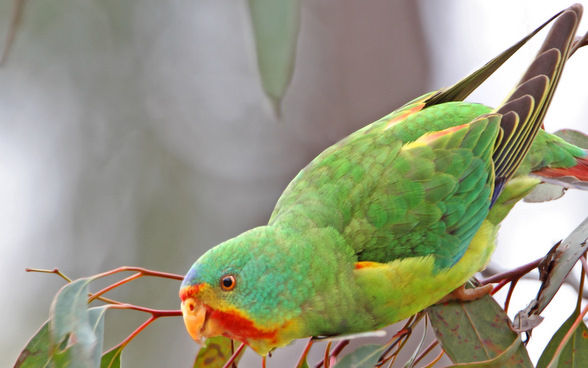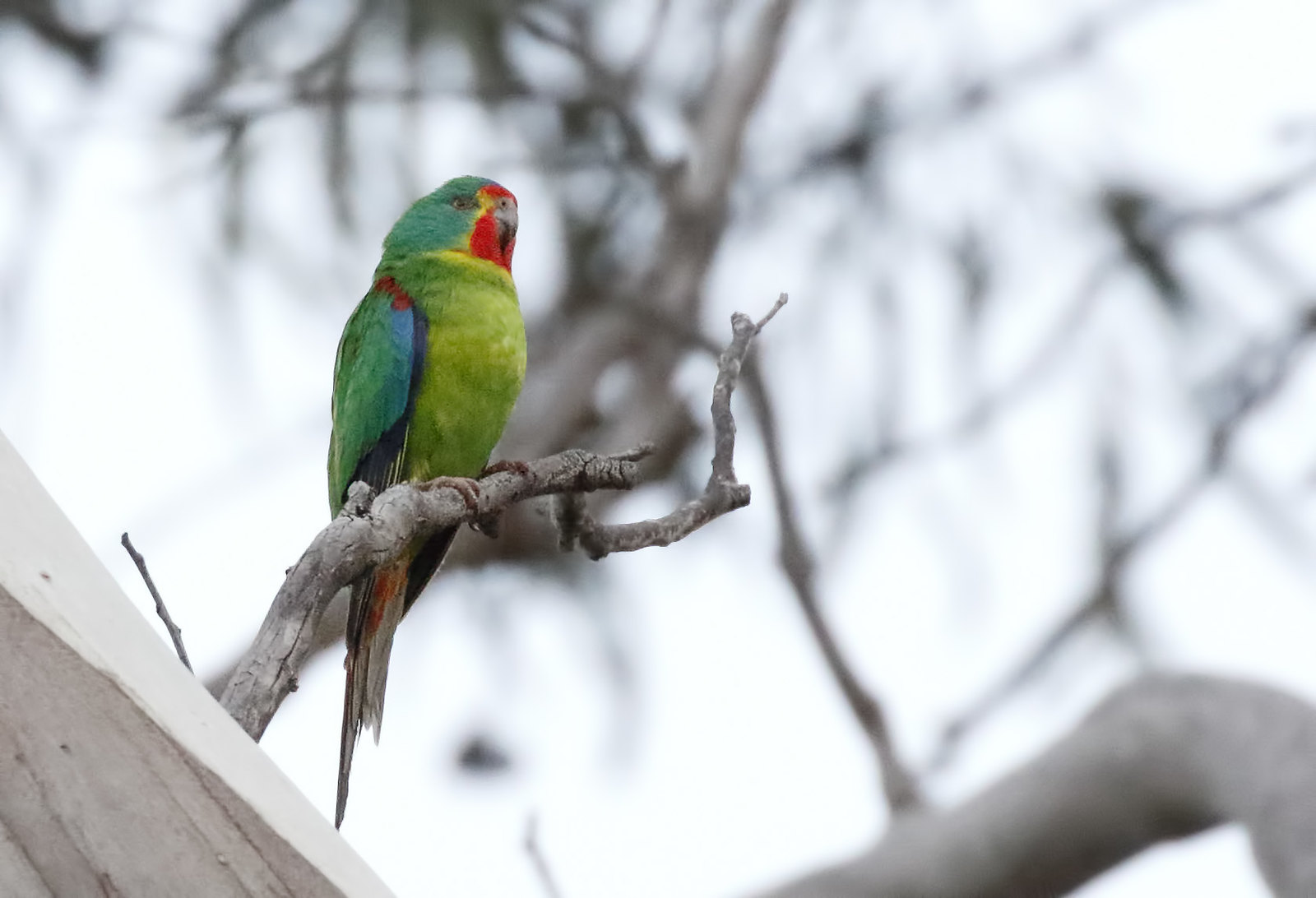Behaviour
Call
A distinctive "kik-kik-kik" usually given in flight, and soft chattering when feeding.
Diet
Mainly nectar from flowering eucalypts, as well as seeds, flowers, fruit and insects. Favoured feed trees include the Tasmanian Blue Gum, Swamp Gum, Swamp Mahogany, Spotted Gum, Red Bloodwood, Mugga Ironbark, and White Box. It is an active and agile feeder, often hanging upside down. It occasionally comes to the ground to drink.
Movement
Very fast and direct in flight. It is migratory, breeding in Tasmania and then moving to south-eastern mainland Australia (Victoria and New South Wales, with smaller numbers in south-eastern Queensland, the Australian Capital Territory and south-eastern South Australia) for the non-breeding season (from February–March to September–October). Its movements on the mainland are poorly understood, moving in response to food supply. Some have been recorded in Tasmania during the non-breeding season. It is usually seen in small groups of up to 30 birds, but sometimes congregates in much larger flocks.
Breeding
It breeds only in Tasmania, mostly along the eastern coastal strip, the Wellington Range near Hobart and on Maria and Bruny Islands. It nests in hollows in old-growth trees across a range of eucalypt species. Many pairs breed close together and nest sites may be re-used, but not necessarily in successive years. Three to five eggs are laid which are incubated by the female for around 25 days. Young birds leave the nest after about six weeks. Two clutches per season may be laid, depending on the availability of food resources.
Field Guide
Improve your identification skills. Download your Swift Parrot field guide here!





